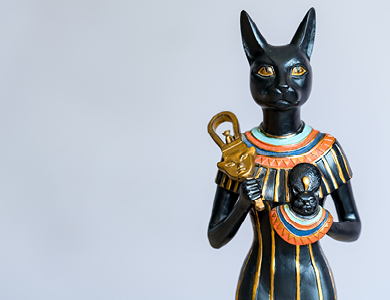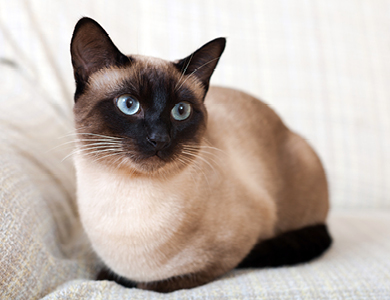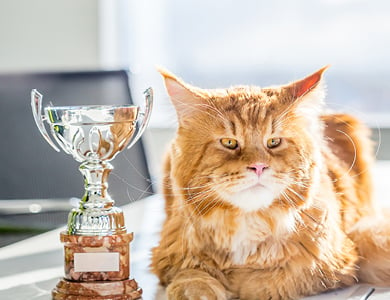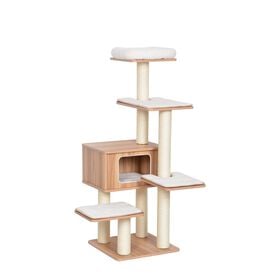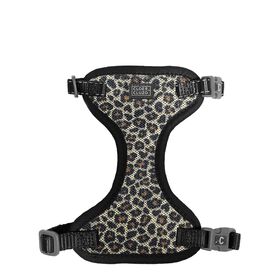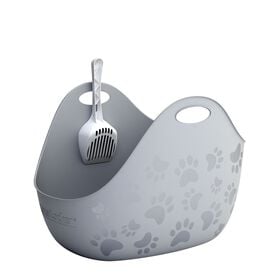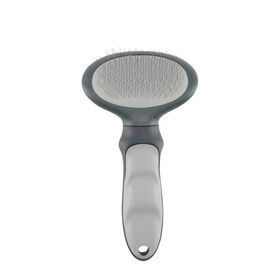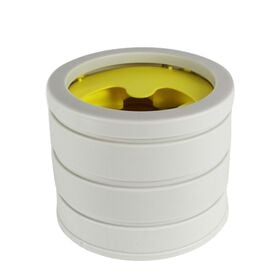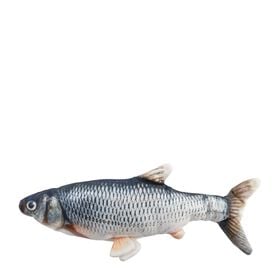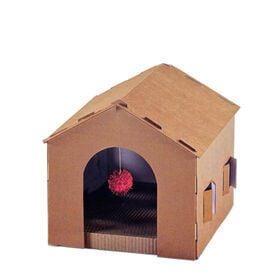Proailurus, from the Latin pro meaning “before” and ailuros meaning “cat,” was a small animal that lived approximately 25 million years ago. Also called Leman’s Dawn Cat, it is not strictly the ancestor of the domestic cat, but was an earlier form of cat. Its remains have been discovered in North America, Asia, Europe and Africa. The only two continents that had no cats before humans brought them over are Oceania and Antarctica. That is why Australia and New Zealand have adopted such strict regulations regarding the imports of cats. Their ecosystem, composed largely of marsupials, is not designed to control such predators, which could wreak havoc if they were able to freely reproduce.
Then came a period 7 to 10 million years ago known as the “cat gap,” in which there are no fossil records of cats anywhere on Earth. Apparently, there was a period in history in which no cats existed.
Eventually, the earliest ancestor of the cat emerged. Pseudaelurus lived on Earth 8 to 18 million years ago. The first Pseudaelurus (there were several types) closely resembled today’s domestic cat in both size and shape. From this beginning, the cat family tree started to branch out, ultimately producing Felis silvestris catus, the current domestic cat.
Ancient breeds
The domestication of cats began 7,500 years ago, when humans became sedentary and began storing grain, which attracted rodents, which in turn attracted cats. Although the most ancient cat breed is disputed, most sources agree that it is the Egyptian mau. It’s no surprise that it can be found in the Fertile Crescent and that it quickly became a cult object among Egyptians, to the point where they created a feline goddess named Bastet, protector of the household, and that it was even forbidden to export cats out of Egypt, under penalty of death.
During that time, in Asia, the bobtail—whose origins are quite nebulous—first appeared, apparently between the 5th and 10th centuries AD. Be careful not to confuse the bobtail with the Japanese bobtail, which made its official appearance in 1960.
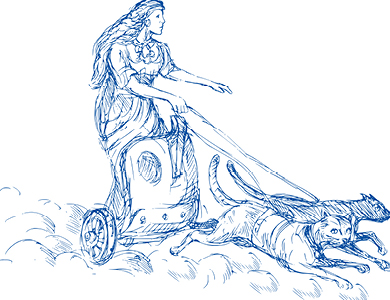
Another very ancient breed comes to us from the Scandinavian countries and can also be found in mythology. The northern goddess Freya travelled in a chariot drawn by two cats, Bygul and Trjegul, given to her by Thor. The name of the breed, Norwegian forest cat, leaves no doubt about its origins. This breed shares the prize with the Maine coon for the largest natural cat breed, with males weighing as much as 11 to 15 kg.
The Turkish angora is another breed that appeared in the Scandinavian regions between the 5th and 10th centuries. It is even said that it was imported to France in the 16th century and became the darling of the French nobility. Marie-Antoinette apparently had several, including two more famous ones. According to legend, she shipped her Turkish angoras to America in advance of her planned escape. They made it out alive; she didn’t. Her cats arrived in the port of Wiscasset, Maine, where they were bred to produce the Maine coon. This breed got its name because it was believed that the cats were crossbred with racoons to obtain their magnificent bushy tail. However, the story is largely rooted in legend, because DNA analyses show that the Maine coon emerged only in the 18th century, and 200 years is not long enough to develop a distinct breed, considering that there was no artificial selection of cats at the time.
Many have observed almost identical genetics between the Turkish van and the Turkish angora, which are quite similar. Moreover, it is suggested that one breed is just as ancient as the other, although this has yet to be proven.
The first descriptions of the Korat can be found in the Tamra Maew. This colourfully illustrated collection of poems about Thai cats dates back to 1350. According to legend, Siam’s King Rama V (1869‑1910) ordered a copy of the collection and discovered a magnificent silver-blue cat. He decided to name it after the province of Korat, Thailand, where the cat came from. That is why it is often said that the Korat’s origins date back to the 14th century. Despite this, current scientific evidence confirms that the breed’s origins date back only to the 18th century.
The golden age of cat breeds
Why do several tables depict Siamese cats as the famous Egyptian cats? This depiction is an error, since the Siamese emerged only between the 14th and 17th centuries. The Siamese is a very significant breed in the artificial selection of cats, since it was used to develop nearly 15 breeds that still exist today. Its point coloration (darker points) and blue eyes are two characteristics that are highly prized for the development of other breeds such as the Balinese, the Tonkinese and the Oriental shorthair. Along with the Persian, the Siamese is the cat breed that has undergone the greatest physical transformation as a result of artificial selection. Today, there are even two types of Siamese: the standard Siamese and the modern Siamese, which is much more slender, with big ears and a very narrow muzzle.
Getting back to the Persian, it belongs to a very special category of breeds, along with the British shorthair and the Singapura (the smallest cat breed). Although they are said to be ancient breeds, they have lost their original genetic code. DNA analyses of all representatives of these breeds indicate that their origins date back to the late 18th century, while several texts indicate that they existed well before that. British shorthairs are mentioned in legal texts dating back to the 10th century. There are several possible explanations, such as the one that holds that it is related to the Chartreux, whose origins date back to the time of the Crusades, but that practically disappeared in the early 20th century. Two sisters began the renewal of the breed, starting with rare colonies on Belle-Île island.
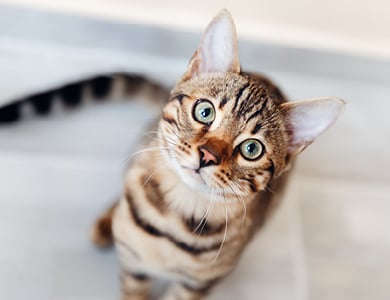
The first exhibition of purebred cats took place in London in 1971. From there, several breeds were created and modified. Today, there are between 70 and 100 breeds officially recognized by various associations. However, there are nearly 130 different breeds, and a new one is created every five years. Some are developed simply as a result of genetic mutations, such as the lykoi and the sphynx, which is the only cat breed that has its origins in Canada, or the munchkin (also called sausage cat), characterized by its short legs. Others are hybrid breeds created with a great deal of effort. Such is the case with Bengal and Savannah cats, and the brand new caracat, created by crossbreeding wild and domestic cats, crosses that are far from natural. The proof: the resulting males are sterile for five generations, which just goes to show that nature did not really intend this type of crossbreeding.
That is why there is a distinction between natural breeds (e.g., bobtail, Manx, Norwegian forest cat), established breeds (e.g., Birman, British shorthair, Maine coon), resulting from variations between different cat breeds, and hybrid breeds, crosses between domestic cats and wild cats (e.g., Bengal, Savannah).
Genetic drift
The history of cat breeds shows that, unlike dog breeders, who breed their animals in a variety of shapes and sizes, cat breeders have not sought to significantly change the appearance of cats, even though some breeds have unfortunately had to bear the brunt. That is the case for Persians over a very short period. Looking at championship photos from the early 20th century and now, it’s hard to believe that they are the same breed. In past photos, Persians had their noses pointed forward just like today’s domestic cats, while recent winners have flattened noses, which cause various health problems.
Let’s wrap up this article with a few thoughts and questions from Daniel Filion, cat behaviour specialist at Educator:
“Given that several breeds have serious health problems as a result of this desire to maintain standards that are far from natural, shouldn’t these standards be called into question? These changes were made for purely esthetic reasons in an effort to create an animal that is “different” from the others, but that serves no practical purpose. Could it be that the major problem is that these changes are pushed to the point where animals are forced to suffer? In the case of Persian cats, for example, several lineages now have breathing and oral health problems because of increasingly flattened noses.
I have nothing against purebred cats. I own two of my own, and I agree with preserving their unique characteristics. However, when you consider that most breeds are created by crossbreeding wild and domestic cats or are the result of the exploitation of errors in nature, shouldn't it be that we have to take responsibility for our desire to create special breeds in order to please or be different, especially if these manipulations end up creating animals that suffer as a result?”


